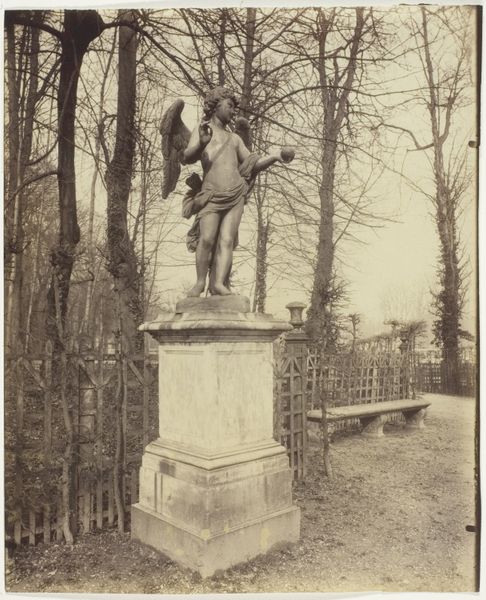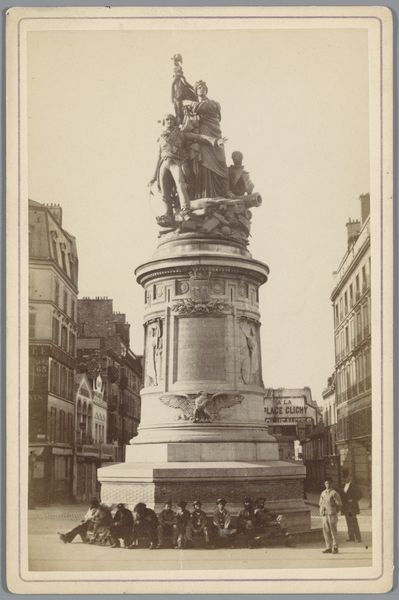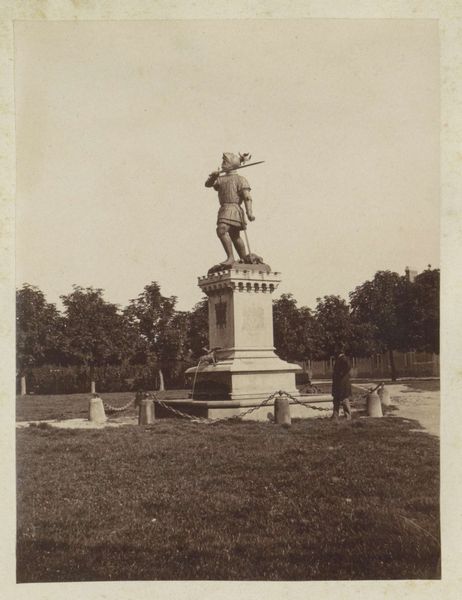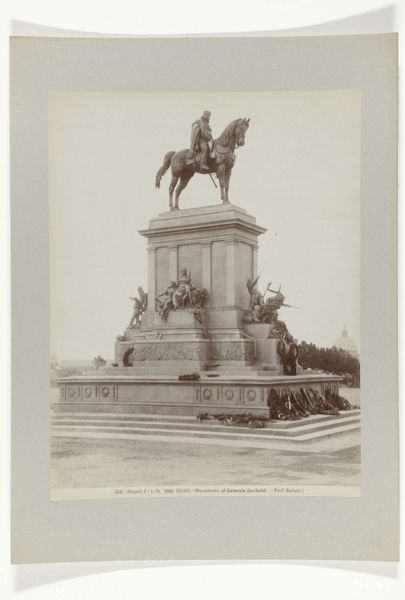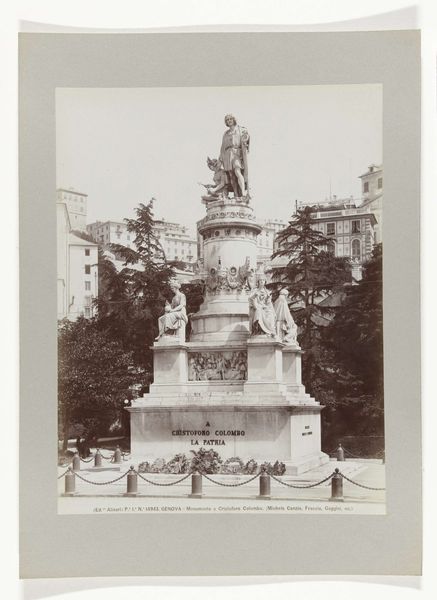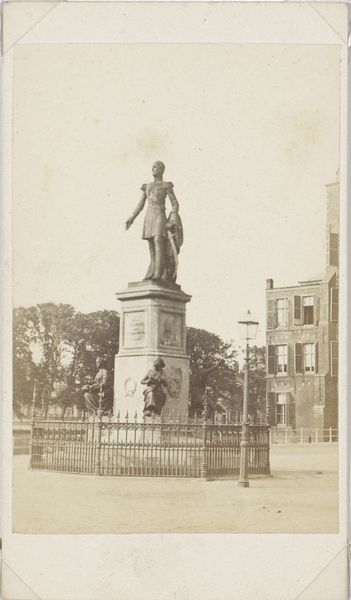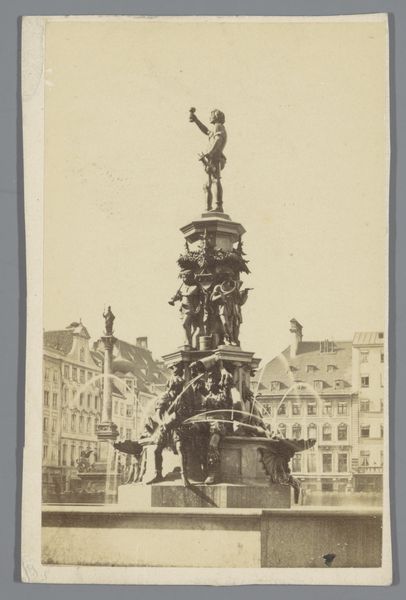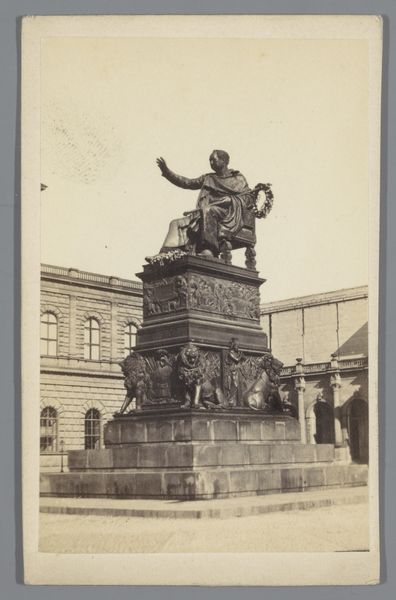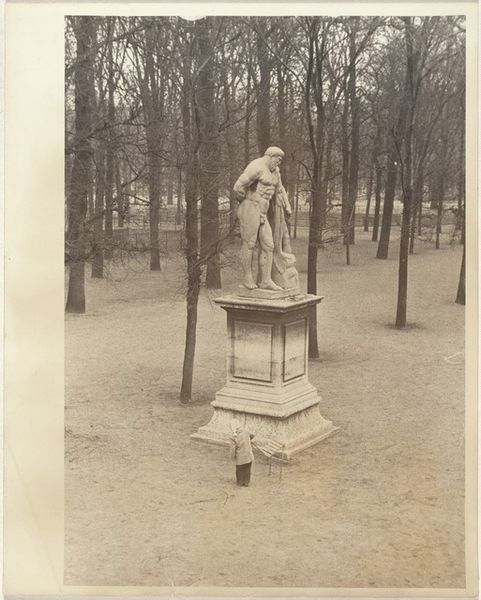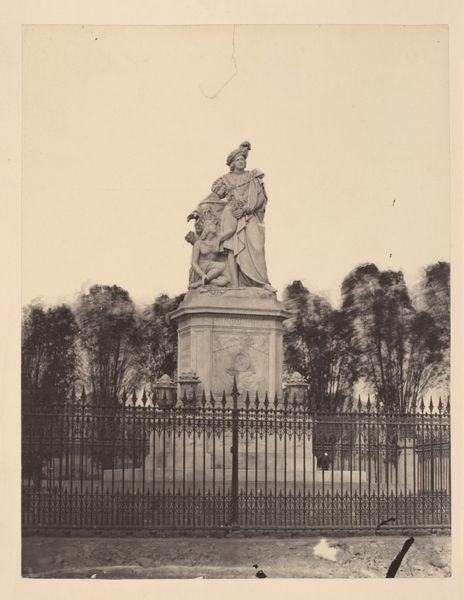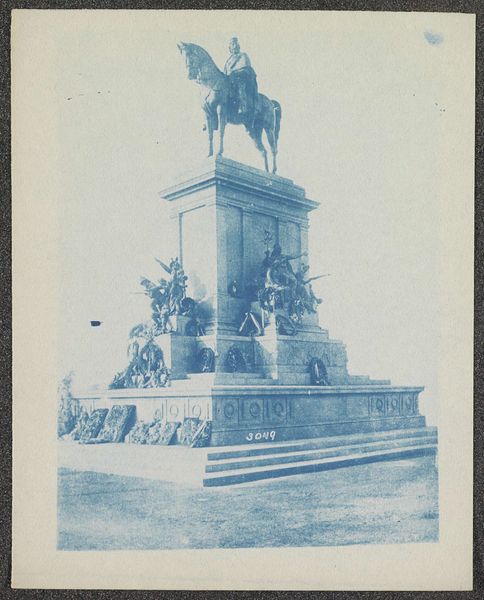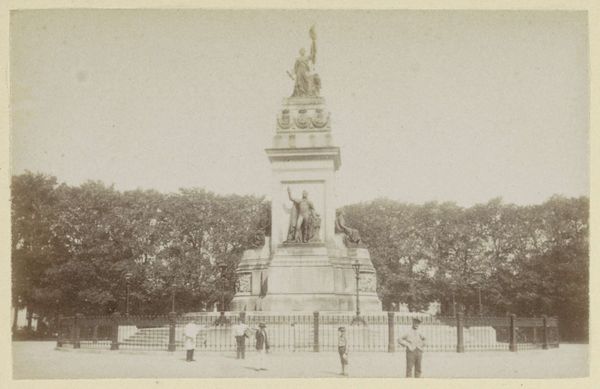
Dimensions: height 136 mm, width 95 mm, height 165 mm, width 107 mm
Copyright: Rijks Museum: Open Domain
Editor: This is a photograph of the Willem II monument in The Hague, dating from around 1854 to 1890. It looks like a bronze sculpture situated outdoors. The monument looms large, dominating its environment. How do you interpret this work, considering its historical and social context? Curator: The monument, typical of its Neoclassical style, serves as a powerful assertion of dynastic authority. Think about what a monument like this communicates: dominance, power, and the supposed natural order of leadership. How might it reinforce existing social hierarchies? Editor: It definitely puts Willem II on a pedestal, both literally and figuratively. The surrounding figures at the base, though I can't see their expressions clearly, seem subservient, reinforcing his power. Curator: Precisely. Consider the timing, too. Placed in a public space, it visually inscribes a certain narrative about Dutch history and identity onto the landscape. Who is included in this narrative and who is conspicuously left out? How might this impact collective memory and historical understanding? Editor: That’s a really good point. It prompts us to consider the people and perspectives absent from this constructed representation of power. Maybe this image freezes one view, a single perspective, when actually it's far more complicated than that. Curator: Exactly. We must question whose stories are deemed worthy of monumentalization and who gets relegated to the margins. Editor: Looking at it that way, I realize that studying art involves deconstructing these powerful visual narratives to unveil their inherent biases. I will think about this representation the next time I visit a museum. Curator: Precisely.
Comments
No comments
Be the first to comment and join the conversation on the ultimate creative platform.
